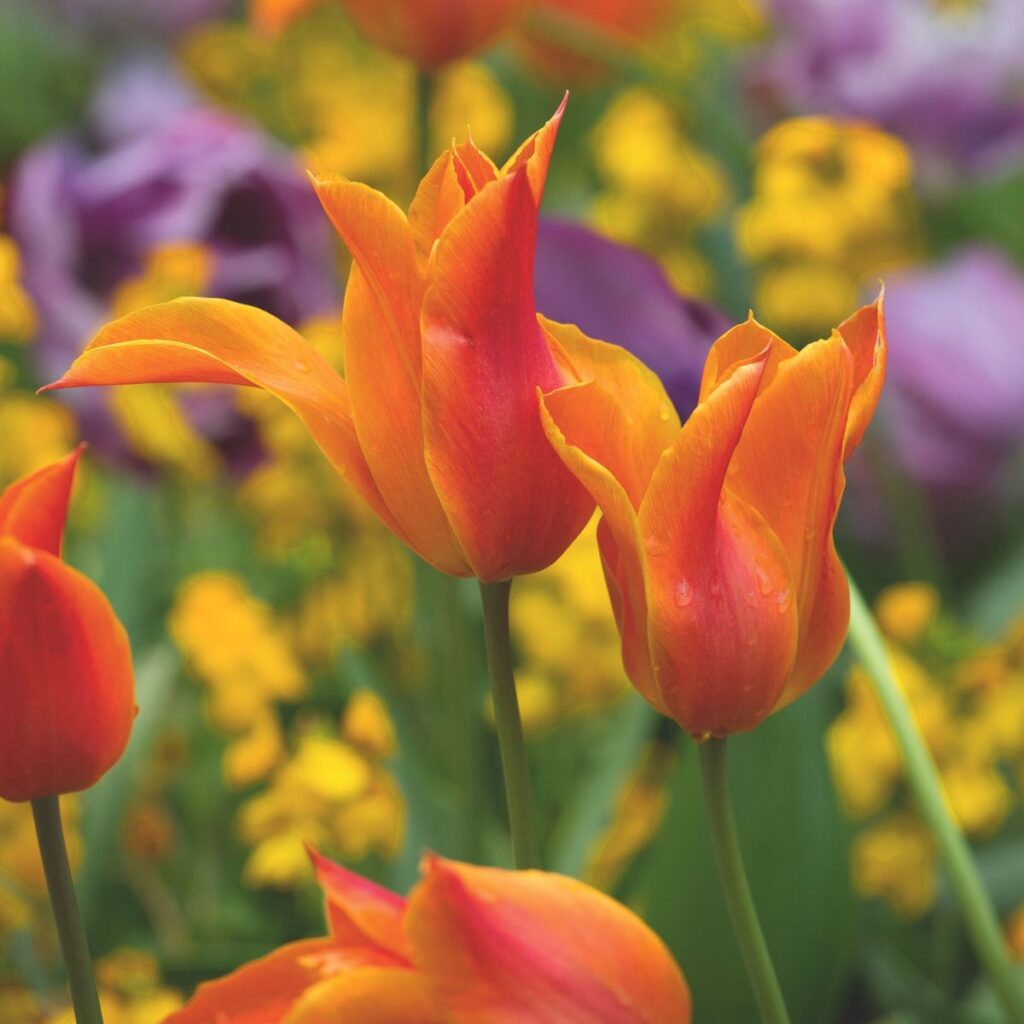If you’re eager to start gardening this month, it can be tempting to turn to spring bulbs for a colourful fix of flowers next season. But can you plant bulbs in January?
If you’re familiar with the rules around when to plant bulbs for spring, you’ll know that autumn is the prime season for planting daffodils, tulips, hyacinths and other spring-flowering bulbs. But if you’ve missed the window, can you plant bulbs in January instead?
Well, you can — but before you add the task to your list of jobs to do in the garden in January, you’ll need to be aware of a few drawbacks.
If you missed the autumn window, you might be inclined to learn how to plant bulbs for spring during the drearier months of the year.
‘We’ve all done it — gone mad with buying spring bulbs and then run out of time, energy or enthusiasm, especially with last year’s soggy weather,’ says Annelise Brilli, horticultural copywriter at Thompson & Morgan.
While you still can plant spring bulbs in January, it isn’t the wisest choice.
‘I wouldn’t necessarily recommend planting any bulbs in January here in the UK,’ says Steve Chilton, garden expert at LeisureBench. ‘This is because there’s a very high chance that the ground has already frozen, and realistically, you need to ensure your bulbs are planted before the ground freezes for the first time or after the final ground freeze of the season.’
Even so, if you have some bulbs left over and they’re likely to expire before the end of this year, it’s worth a shot.
‘If you’ve already got some spring bulbs, they likely won’t last until next autumn, so it’s worth trying to plant them now, just in case they do bloom,’ says David Glass, head gardener at Bowood House & Gardens.
You’ll just need to consider the potential pitfalls before you start digging.
‘If you missed the planting season for your spring-flowering bulbs, then you can still plant them in January, but the chances that the plants will be fully healthy and successful when flowering is less than it would be if you planted them during their proper season,’ explains Steve.
So, can you plant bulbs in January? As long as the ground isn’t frozen, yes — but success also depends on the type of bulb. Some spring bulbs do better in colder weather, for example.
So, we’ve broken down some of the most popular spring bulbs and assessed which types offer the best chance of success when planted in January.
Which bulbs can you plant in January?
1. Tulips
Technically, the best time to plant tulip bulbs is between September and late November, but these bulbs fare best during the colder months, when they’re better able to fight off disease. That’s why they’re generally considered safe to plant in January.
‘If you’re looking to plant spring bulbs in January, tulips are a viable option,’ says David.
‘Later flowerers such as tulips will certainly cope with a January planting,’ Annelise agrees.
If the ground is frozen, you can learn how to plant tulips in pots instead.
Tulip bulbs are still available to buy at some retailers. Here’s where you can find them:
2. Daffodils
A staple in any spring garden, daffodils are a welcome sign that warmer weather is on the way. If you’re wondering when to plant daffodil bulbs, you’ll be happy to know that they, too, can survive being planted in January — but they might not bloom as well.
‘Daffodils need time to put down deep roots and, along with crocuses, enjoy a prolonged period of cold exposure, so if you plant them in January, they might not flower — or ‘come up blind’,’ Annelise warns.
3. Hyacinths
If you’re aware of the rules around when to plant hyacinth bulbs, you’ll know they’re best planted in the autumn like other spring bulbs. For guaranteed blooms, you should aim to plant them before the first frost to ensure that their roots have enough time to establish.
Hyacinth bulbs are hardy, though, which means that you can get away with planting them later than you might think. If you do plant hyacinth bulbs in January, however, you must plant them in containers to protect them from the harsh temperatures.
‘With any spring bulbs, success will also depend on how well you have stored them up to now,’ Annelise adds. ‘Soft, mouldy bulbs with damaged skins sprouting weak, pallid shoots are likely to fail.’
FAQs
What happens if you plant bulbs late?
As our panel of garden experts mentioned, planting bulbs in January might results in fewer (and later) blooms.
Spring bulbs generally need a long enough period in the ground to establish their roots, which means planting them late can hinder their full potential, causing flowers like daffodils to come up blind.
What is the latest month to plant bulbs?
Ideally, January should be the latest month you’re thinking about planting spring bulbs.
After that, you can start thinking about when to plant summer bulbs like lilies, agapanthus and Japanese anemones.
So, can you plant bulbs in January? It’s worth a shot — but bear in mind that they’re less likely to reach their full flowering potential.
Read the full article here
